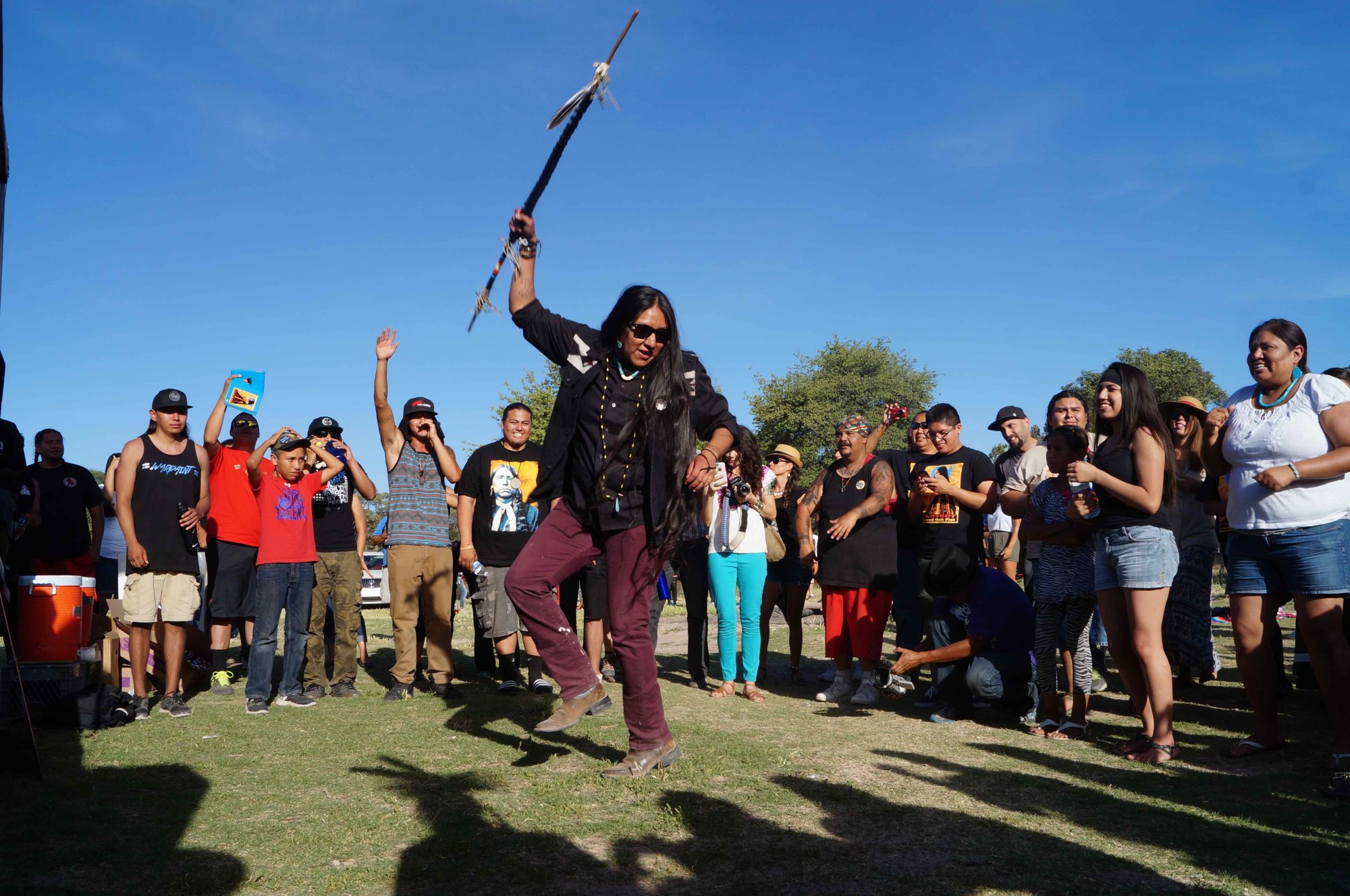It’s with uneasy hearts that many Americans accept Republican nominee Donald Trump as our future president. Though Hillary Clinton won the popular vote, Trump’s unexpected victory is shocking for the people of color, women, immigrants, and disabled folks he has publicly offended thus far. In a post-election speech, President Obama touched on his relationship with the president-elect, saying as a transitioning country we need “a sense of unity, a sense of inclusion, a respect for our institutions, our way of life, rule of law, and respect for each other.”
But it is difficult for some to move forward with a candidate whose campaign succeeded on just the opposite of respect and inclusion — particularly his remarks regarding Muslim and Mexican immigration. It is difficult to respect a president who has admitted to and defended sexual harassment. And for Native American communities across the nation who have survived hundreds of years of colonization, it is difficult to see a man who has historically disrespected and attacked indigenous peoples be elected to office in 2016.
Trump’s animosity towards Native Americans began with his lobbying efforts to squash the indigenous competition to his bankrupt casinos. After many failed attempts to get into business with several tribes, including the Agua Caliente Band of Cahuilla Indians in California and the Seminole Tribe of Florida, Trump launched an unsuccessful campaign against Native American gaming that made it to the U.S. House of Representatives subcommittee on Native American and Insular Affairs in October of 1993. The campaign, a reaction to his rejected business proposals and failing establishments, was saturated with entitlement, slander, and extreme insensitivity.
On June 18th of 1993, Trump gave a radio interview with distasteful talk show host Don Imus where he argued that the Mashantucket Pequot Tribal Nation “don’t look like Indians,” questioning their access to tribal rights with narrow-minded notions of what Native Americans are supposed to look like, and made unfounded accusations that their Connecticut-based casinos were harboring organized crime. He then expressed sympathy for General George Custer — the man who led the 7th Calvary Regiment that committed the 1890 Wounded Knee Massacre — for their shared opposition against Native American tribal sovereignty. “General George Custer was against it also and look what happened to him,” he said in regards to the general’s eventual murder. Today, the Lakota Pine Ridge Indian Reservation is still reeling from the largest massacre in American history where up to 300 women, children and men were slaughtered in their homes. The fact that the president of our country is a man who openly identifies with Custer, a prominent figure in the Native American genocide, is a painful reality for indigenous peoples.
That was the beginning. In 2000, Trump was fined for secretly funding over $1 million for ads attacking the Akwesasne Mohawks over their plans to open a casino in New York States’ Catskill resort area, propagating prejudice ideas of Natives as “thugs” and criminals. In 2015, he defended the Washington Redskins, a contested racial slur, alongside Jeb Bush. And even during his 2016 presidential campaign, Trump taunted Elizabeth Warren on Twitter, referring to her as “Pocahontas” because of her self-proclaimed partial Cherokee heritage. These actions of investing time, energy, and money in oppressing indigenous freedom have become a pattern, defining Trump as a fundamentally anti-Native American businessman and politician.
Beyond these verbal and economic attacks, Trump’s environmental policies are worrisome and may directly affect Native communities. Trump has been very vocal about his plans to open federal lands to oil and gas drilling as well as coal mining, disruptive and risky operations that are often forced upon indigenous lands without consent. According to his Public Financial Disclosure Report, Trump hasalready invested at least $500,000 in Energy Transfer Partners, the company behind the contested Dakota Access Pipeline terrorizing the Standing Rock Sioux tribe. The peaceful protests against the construction of the crude oil pipeline have resulted in state and federal police militarization (snipers included), hundreds of violent arrests, and overall physical danger of the elders, families, and youth protecting their land and water.
Though Trump has proven to be a noxious force for indigenous progress, his presidency does not mean Native American defeat. The 2016 election was the most involved any candidates have been with Native communities to date – Bernie Sanders met with a record of 90 indigenous leaders and Hillary Clinton ran campaign ads in the Navajo language. The increased visibility in politics and media that has been growing with movements like Canada’s Idle No More and the #NoDAPL protests have cultivated an indigenous leverage in local politics that can affect elections on the congressional level. With challenges on reservations such as voting identification requirements, language barriers, and geographic hindrances, Native Americans are making a slow yet hopeful climb towards a voting system that has legally excluded them until 1924, which is four years after women suffrage.
Native Americans will continue to stand together against people like Donald Trump. They will support one another and protect their rights in the face of broken treaties and outside forces like they have for the past five centuries. And it’s not going to be an easy four years. It will most likely be fraught with continued battles for tribal sovereignty and basic human rights, like the The Indian Health Care Improvement Act recently made permanent in 2010. But indigenous people, especially the indigenous youth, will continue to hold their ground and nurture the beautiful network of solidarity they have so painstakingly built for themselves, their ancestors, and their future generations. The connections leaders like Bobbi Jean Three Legs of the Standing Rock Sioux have made across indigenous nations as well as the political music Lakota hip-hop artist Frank Waln shares as a crossover Native artist are examples of this infrastructure. And if history is of any indication, Trump’s potential anti-Native American policies will be met with organized indigenous resistance.
Credits
Text Braudie Blais-Billie
Photography Cougar Vigil

